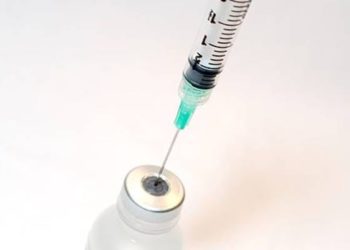Home visits in Ghana improve neonatal mortality
Image: PD/USAID Africa (usaid.gov)
1. In areas visited by community health workers during pregnancy and the first week of newborn life, neonatal mortality was reduced by 8%.
2. Home visits significantly improved bednet use, breastfeeding, skin-to-skin contact, and care seeking.
Evidence Rating Level: 1 (High)
Study Rundown: In 2009, WHO and UNICEF issued a joint statement calling upon low- and middle-income countries to institute home visits for newborn babies. This recommendation was based on four proof-of-concept studies in south Asia that suggested home visits could reduce neonatal mortality rates (NMR) by 30-60%. However, subsequent randomized controlled trials have failed to show such a dramatic effect. This study was designed to determine whether such a home visit strategy delivered via community health workers in sub-Saharan Africa could substantially reduce NMR. Though Newhints (NEWborn Health INTervention Study) achieved only an 8% NMR reduction in Ghana, the intervention significantly increased coverage of most essential newborn practices, even in areas where uptake was relatively high at baseline.
This 8% NMR reduction was not significant, as the study was not powered to detect such a small NMR reduction; the authors attempt to remedy this by generating a combined summary NMR reduction estimate from a meta-analysis including this and three other randomized controlled trials. This combined NMR reduction estimate is 12% with a tight 95% confidence interval of 5 to 18 percent. However, even without drawing upon other studies, the NMR reduction achieved by Newhints jumps to 15% when looking at neonatal deaths occurring after 1 day of life, the key target of a community intervention poorly equipped to address birth asphyxia. This study suggests that home visits are effective in improving neonatal care, but must be combined with investments to improve neonatal care in health facilities to substantially reduce NMR in developing countries.
Click to read the study in The Lancet
Relevant Reading: Evidence-based, cost-effective interventions: how many newborn babies can we save?
In-Depth [cluster randomized trial]: 98 zones in Ghana were involved in the study; 49 were randomized to receive the Newhints intervention and 49 served as controls. In Newhints zones, community-based surveillance volunteers (CBSVs) were trained to identify pregnant women, then make two home visits in pregnancy and three in the first week of newborn life. CBSVs promoted essential newborn care practices, weighed and assessed babies, and referred as necessary. Zones were analyzed by intention to treat with primary outcomes neonatal mortality rate (death within the first 28 days of life) and coverage of essential newborn practices.
The Newhints intervention significantly increased coverage of all key essential newborn-care behaviors except two: accessing antenatal care (76% vs 74%, RR 1.02, 95% CI 0.96-1.09) and facility delivery (68% vs 68%, .97, 0.81-1.14). Substantial increases were seen in bednet use during pregnancy and the newborn period, arranging advanced transport to facility, early initiation of breastfeeding, skin-to-skin contact, and exclusive breastfeeding. The largest increase was for care-seeking; sick babies in Newhints zones were 43% more likely (p=0.001) to be taken to a hospital or clinic than those in control zones. Overall neonatal mortality rate was reduced 8% in Newhints zones (.75-1.12; p=0.405). However, post day 1 neonatal mortality rate was reduced 15%. When combined with three other randomized controlled trials studying similar interventions, the summary estimate of neonatal mortality reduction is 12% (95% CI 5-18).
By Elizabeth Kersten and Andrew Bishara
More from this author: Meta-analysis updates recommendations for C-sections, Early childhood growth improves adult health outcomes in developing countries, Shorter telomere length linked with increased risk of common cold, Breastfeeding associated with lower rates of hypertension, Health information technology improves obesity treatment access and screening, Undervaccination becoming more common, associated with increased admission rates
© 2013 2minutemedicine.com. All rights reserved. No works may be reproduced without written consent from 2minutemedicine.com. Disclaimer: We present factual information directly from peer reviewed medical journals. No post should be construed as medical advice and is not intended as such by the authors or by 2minutemedicine.com. PLEASE SEE A HEALTHCARE PROVIDER IN YOUR AREA IF YOU SEEK MEDICAL ADVICE OF ANY SORT. Content is produced in accordance with fair use copyrights solely and strictly for the purpose of teaching, news and criticism. No benefit, monetary or otherwise, is realized by any participants or the owner of this domain.







